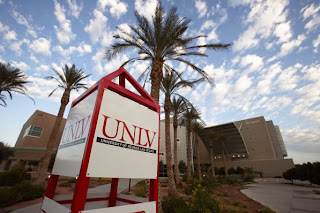UNLV needs to get smaller says ... UNLV President Neal Smatresk
Remember this when the higher education scaremongers start pretending that the world will end if Nevada's universities get even a penny less of government money.But [UNLV President Neal] Smatresk said it is very difficult for a university to compete with a community college and a state college for students when it charges two or three times as much.Smatresk is on the right track here. There's no reason that UNLV should look like UNR or a community college or any other institute of higher education. It should set its own unique goals and be able to pursue them.
A better model, he said, would be to shrink the university a little and improve upper division and graduate education so students will want to come to UNLV because of its quality.
There are a couple of problems in current system: Nevada's universities have to send the tuition they collect to the state, which then returns a portion to the universities, and the state heavily subsidies each school.
If Nevada's universities were allowed to keep their own tuition, have more self-governance and were weaned off government subsidies, it would help them become more entrepreneurial and innovative. Ultimately both students and taxpayers would benefit.
And this isn't a pie-in-the-sky pipe dream either. The University of Michigan has done something similar over the past 35 years.
In 1965, the University of Michigan-Ann Arbor (U-M) received 70 percent of its funding in appropriations from the state of Michigan. By 2003, U-M had reduced its dependence on the state to just 10 percent of total revenue. At the same time, U-M remained a top 25 institution according to the University of Florida's Top American Research Universities and U.S. News & World Report's annual rankings. U-M also tops Wall Street rankings, becoming the first public university to have its credit rating raised to an Aa1 ranking and its bonds trading at Aaa levels. Today, Michigan's flagship university is considered "Silicon Valley East" and has become a model for other large, public research institutions.






